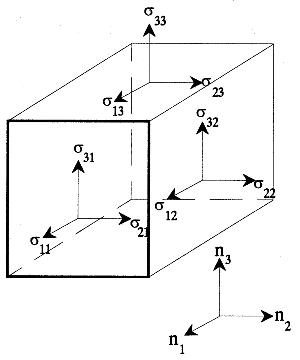Rheology:Concepts,Methods,andApplications3rd EditionAlexanderYa.Malkin

https://ebookmass.com/product/rheology-concepts-methods-andapplications-3rd-edition-alexander-ya-malkin/
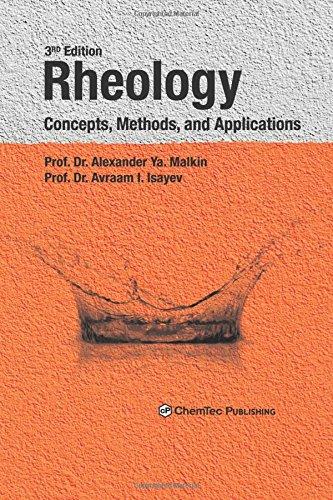
Instant digital products (PDF, ePub, MOBI) ready for you
Download now and discover formats that fit your needs...
Rheology: Concepts, Methods, and Applications Alexander Y. Malkin
https://ebookmass.com/product/rheology-concepts-methods-andapplications-alexander-y-malkin/
ebookmass.com
Quantum Mechanics 3rd Edition Nouredine Zettili
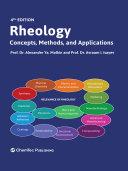
https://ebookmass.com/product/quantum-mechanics-3rd-edition-nouredinezettili/
ebookmass.com
Advances in Food Rheology and Its Applications: Development in Food Rheology 2nd Edition Jasim Ahmed (Editor)
https://ebookmass.com/product/advances-in-food-rheology-and-itsapplications-development-in-food-rheology-2nd-edition-jasim-ahmededitor/
ebookmass.com
US Presidents and the Destruction of the Native American Nations 1st ed. 2021 Edition Michael A. Genovese
https://ebookmass.com/product/us-presidents-and-the-destruction-ofthe-native-american-nations-1st-ed-2021-edition-michael-a-genovese/
ebookmass.com

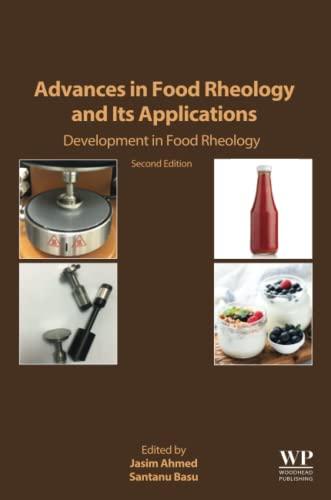
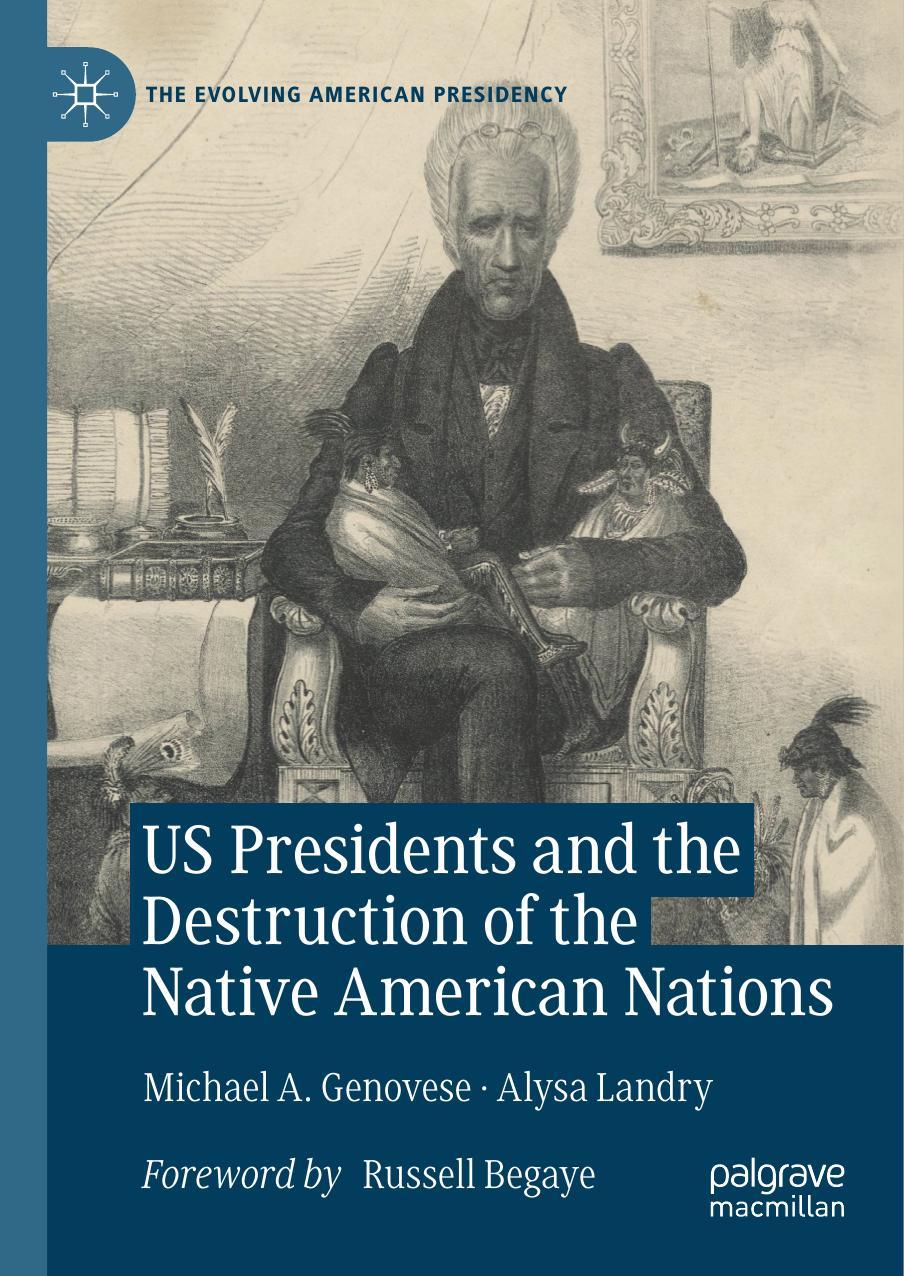
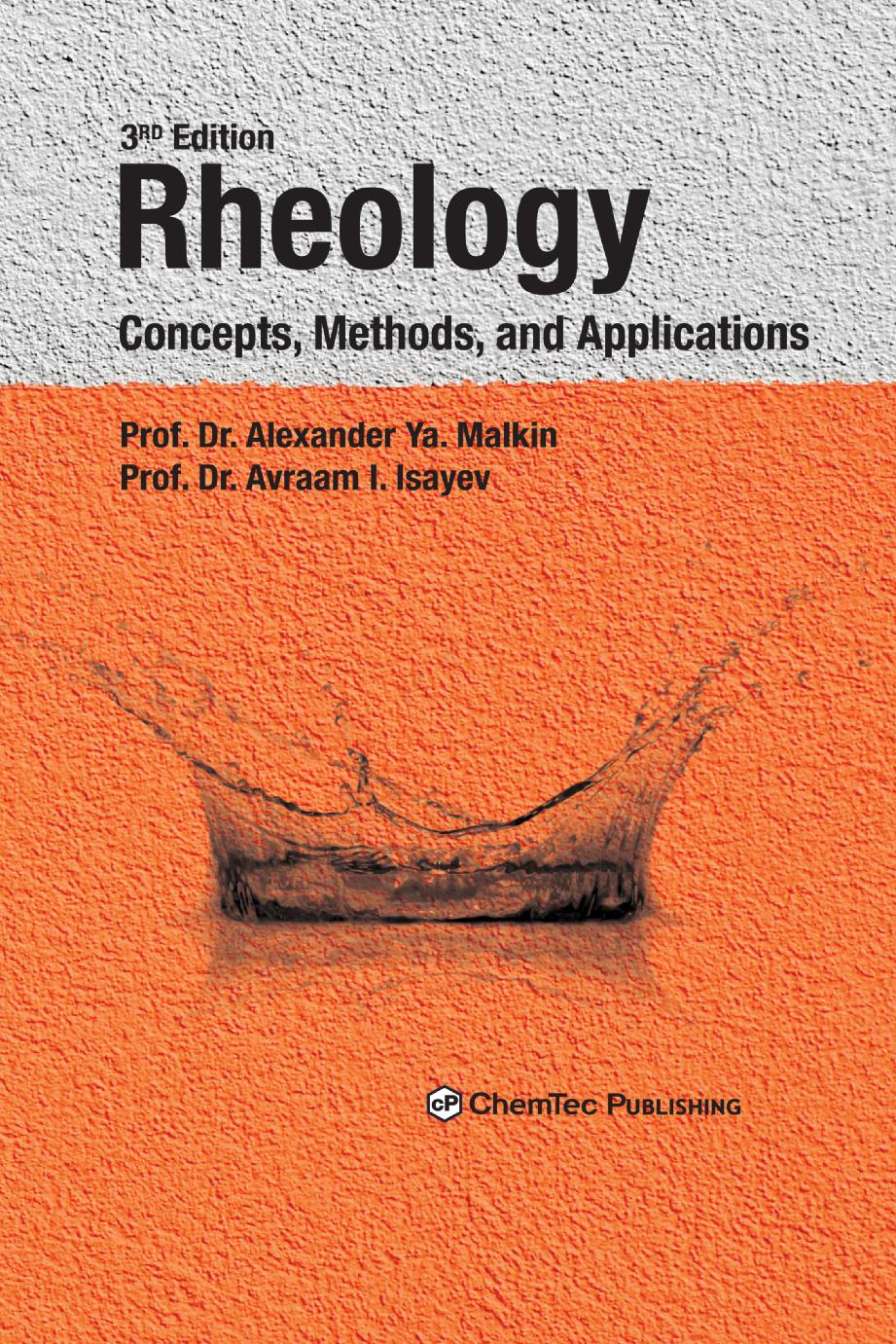
Rheology
Concept, Methods, and Applications
3rd Edition
Prof. Dr. Alexander Ya. Malkin Academy od Sciences, Institute of Petrochemical Synthesis Moscow, Russia
Prof. Dr. Avraam Isayev
The University of Akron, Department of Polymer Engineering Akron, Ohio, USA

2.3
2.3.1
2.3.2 Complicated mechanical models differential rheological equations
2.4 Superposition The Boltzmann-Volterra Principle
2.4.1Integral formulation of the superposition principle
2.4.2 Superposition principle expressed via spectra
2.4.3 Simple transient modes of deformation
2.4.3.1 Relaxation after sudden deformation
2.4.3.2 Developing stresses at constant shear rate
2.4.3.3 Relaxation after steady shear flow
2.4.3.4 Relationship between relaxation and creep functions
2.4.3.5 Relaxation function and large deformations
2.5 Relationships among viscoelastic functions
2.5.1 Dynamic functions relaxation, creep, and spectra
2.5.2 Constants and viscoelastic functions
2.5.3 Calculation of a relaxation spectrum
2.5.3.1 Introduction general concept
2.5.3.2
2.5.3.3
2.6 Viscoelasticity and molecular models
2.6.1 Molecular movements of an individual chain
2.6.1.1 A spring-and-bead model (“free draining chain”)
2.6.1.2 Model of a non-draining coil
2.6.1.3 Model of a rotating coil
2.6.2
2.6.2.1
2.6.2.2
2.6.2.3
2.6.2.5
2.6.2.6
2.6.2.7
2.6.3
2.7 Time-temperature superposition. Reduced (“master”) viscoelastic
2.7.1
2.8.1
2.8.1.1
2.8.1.2
2.8.1.3
2.8.1.4
5.2.2.7 Adsorption on a channel surface
5.2.3 Flow in incompletely filled capillary
5.2.3.1 Motion under action of gravitation forces
5.2.3.2 Motion caused by surface tension forces
5.2.4 Limits of capillary viscometry
5.2.5 Non-viscometric measurements using capillary viscometers
5.2.6 Capillary viscometers
5.2.6.1 Classification of the basic types of instruments
5.2.6.2 Viscometers with the assigned load
5.2.6.3 Cup viscometers
5.2.6.4 Glass viscometers
5.2.7 Viscometers with controlled flow rate
5.2.7.1 Instruments with a power drive
5.2.7.2 Instruments with hydraulic drive
5.2.7.3 Extrusion rheometers
5.2.7.4 Technological capillary tube viscometers
5.3 Rotational rheometry
5.3.1 Tasks and capabilities of the method
5.3.1.1 Viscometric and non-viscometric measurements
5.3.1.2 The method of a constant frequency of rotation
5.3.1.3
5.3.2
5.3.2.1
5.3.2.2
5.3.2.3 Bi-conical viscometers
5.3.2.4
5.3.2.5
5.3.2.6
5.3.2.7 On a role of rigidity of dynamometer
5.3.2.8
5.3.3Limitations of rotational viscometry
5.3.4 Rotational instruments
5.3.4.1
5.3.4.2 Rheogoniometers and elastoviscometers
5.3.4.3 Viscometers with assigned rotational
5.3.4.4 Rotational viscometers for special purposes
5.3.4.5 Rotational instruments for technological purposes
5.3.5 Measuring normal stresses
5.3.5.1 Cone-and-plate technique
5.3.5.2 Plate-and-plate technique
5.3.5.3 Coaxial cylinders technique
5.3.5.4 Hole-pressure effect
5.4 Plastometers
5.4.1. Shear flow plastometers
5.4.2 Squeezing flow plastometers
5.4.3
5.4.3.1
5.5.2Method of rolling
5.5.3 Viscometers with
5.5.4 Viscometers with
5.6 Extension
5.6.1
5.6.2.
5.6.2.1
5.6.2.2
5.6.2.3
5.6.2.4Flow
5.6.2.5 High strain rate methods
5.6.2.6
5.6.3 Biaxial
5.7 Measurement of viscoelastic
5.7.1
5.7.2
5.7.3
5.7.4
5.7.6
5.7.7
5.7.7.1
5.7.7.2
5.7.8
5.7.8.1
5.7.8.2
5.7.8.3
5.7.8.4
5.7.9
5.7.10
5.7.10.1
5.7.10.2
5.7.10.3
5.8
5.8.1
5.8.1.1
5.8.1.2
5.8.1.3
5.8.1.4
Preface
A number of books, devoted to different aspects of both theoretical and applied rheology, were published in the last 20 years. The keyword in the last sentence is “different aspects”. Rheology has a unique structure with its own language, fundamental principles, original concepts, rigorous experimental methods, and a set of well-documented observations with inherent interrelations between various branches of natural science and numerous practical applications.
By examining the enormous volume of rheological literature and meeting various people interested in rheology (university teachers, students, applied scientist, and engineers), the authors felt the need for a systematic presentation of the subject matter in one book a book that includes all components of rheology and presents them as an independent branch of natural science.
However, it became obvious from the early planning stages that some information would need to be omitted to provide a clear presentation of the concepts, methods, and applications which constitute the essence of efforts that created this science. The wish to present all aspects of rheology will inevitably lead to a book of enormous size. Every attempt to write a scientific book is personal and objective; objective because science benefits from objective assessments and personal because our experiences make us feel that certain aspects are more important than others. In our case, we are university teachers and researchers primarily in the field of applied rheology. An attentive reader will most likely find some reflections of our personal preferences.
Considering the goals and the tasks of the book, the authors tried to limit the choice of references to the first publications on a particular subject, also including reviews and papers providing the most expressive examples and illustrations of the topics under discussion. Accordingly, a great number of original publications are not mentioned. It is regrettable because any serious publication is worth mentioning.
The authors hope that the readers of the book will benefit from our presentation of rheology as an interrelated system of concepts, principal phenomena, experimental methods, and directions of their application. Our rheology is also a science interwoven with other branches of theoretical and applied sciences. We take many opportunities to emphasize these links because they enrich science, make it easier to understand and apply, and this also helps to fulfil our goals concisely expressed in the book title. To amplify its usefulness as a teaching tool, all chapters of the book contain questions to be used by readers to assess their knowledge of particular subject. Answers to these questions are included as the last part of the book.
Finally, the authors are glad to fulfil their pleasing duty to thank Dr. Andrei Andrianov (Moscow State University) for his technical assistance in preparing the computer
versions of many figures and realizing the liaison between the authors. The authors are also grateful to Dr. Sayata Ghose for painstaking proofreading and making corrections for this book.
Special gratitude goes to Professor J.L. White who read the manuscript of the book and made many valuable comments, which helped to enrich the presented text.
We express our deep gratitude to publishers of various journals (Advances in Polymer Science, Colloid Journal, European Polymer Journal, International Journal of Polymeric Materials, Journal of Applied Polymer Science, Journal of Macromolecular Science, Journal of Non-Newtonian Fluid Mechanics, Journal of Polymer Science, Journal of Rheology, Macromolecular Chemie, Polymer, Polymer Engineering and Science, Polymer Science USSR, Reviews of Scientific Instruments, Rheologica Acta) and books (Rheology of Elastomers by P. Mason and N. Wookey (eds), A Practical Approach to Rheology and Rheometry by G. Schramm for permission to use figures from their publications.
Alexander Ya. Malkin, Moscow, Russia
Avraam I. Isayev Akron, Ohio, USA
July, 2005
Rheology: Subject and Goals
Rheology, as an independent branch of natural sciences, emerged more than 70 years ago. It originated from observations of “strange” or abnormal behavior of many well-known materials and difficulties in answering some “simple” questions. For example:
•paints are evidently liquids because they can be poured into containers, but why do they remain on vertical walls without sagging down, unlike many other liquids?
•clays look solid but they can be molded into a shape; they may occupy vessels the way any liquid does; why do clays behave like many liquids?
•yogurt does not flow out of a container (it has high viscosity), but after intensive mixing its viscosity decreases, and then increases again when left to rest, so which value of viscosity should be considered?
•concrete mix appears to be solid and rigid, but when subjected to an external force it changes its shape similar to liquids; what are the reasons for such behavior?
•parts made out of polymeric materials (plastics) look solid and hard, similar to parts made out of metal, but they are noticeably different: when force is applied to a metallic part it slightly changes its shape and maintains its new shape for a long time; this is not the case with plastics which also change their shape after force is applied but they continue to change shape; if this material is solid, why does it “creep”?
•pharmaceutical pastes (for example, toothpaste or body lotion) must be “liquids” when applied and they should immediately become “solids” to remain on skin; are they liquids or solids?
•sealants widely used in construction must be fluid-like to seal all spaces and to fill cavities, but then sealant must rapidly “solidify” to prevent sagging; is sealant liquid or solid?
•metals are definitely solids, but how is it possible to change their initial form by punching and stamping as if metal was liquid?
These are just few examples. It is common for them that they represent properties of many real materials and that they exhibit a mixture of liquid-like and solid-like properties. This shows that commonly used words “liquid” and “solid” are insufficient to describe their properties, and new concepts are need to understand properties of many real materials. A new terminology emerges from discoveries and description of new features of mate-
rials. New methods are needed to characterize and measure their properties. New fields of application can be expected from the application of new concepts and the results of studies. All these are the essence of rheology.
Superposition of liquid-like and solid-like features in behavior of technological materials is directly regarded as the consequence of time effects, i.e., the results of observations depend on a time scale. Possibly, this is the most common feature of the materials, which were listed above. Time by itself has no meaning, but time is a reflection of changes in material structure taking place during the period of observation (or experiment).
The main method of rheology consists of constructing models, which are useful in qualitative or (better) quantitative description of experimental results of mechanical behavior of different materials. Any natural science pretends to deal with reality and does so by means of phenomenological models. Any model is created not to reflect all, but the most important, characteristic features of an object. The concepts of liquids and solids are also models and their formal (mathematical) representation originated from the classical works by Isaac Newton and Robert Hooke.
Newton (1687) reflected upon a resistance of liquids to a cylinder rotating in a vessel. His ideas were converted to a more accurate form by Stokes, who formulated a general law of liquid-like behavior, known as the Newton-Stokes law. According to this concept, the deformation rate is expected to be proportional to stress and the constant coefficient of proportionality is called viscosity, which is a material parameter of liquid. This law assumes that, in flow of liquids, a force (or resistance to flow) is proportional to a velocity (of movement).
Hooke (1676) formulated a similar proposal concerning properties of solids. The law, named after him, was translated to modern form by Bernoulli and then by Euler. Hooke’s law states that in deformation of solids, stress is proportional to deformation. The coefficient of proportionality is called Young’s modulus
Both models represent properties of many real materials and work well in describing their behavior with a considerably high degree of accuracy. However, there are many other materials which are not described by the Newton-Stokes and the Hooke laws. Rheology relies on the concept that non-Newtonian and non-Hookean materials exist in reality. These materials are interesting from both theoretical and applied aspects, and that is why such materials must be the objects of investigation.
It is important to emphasize that every model describes properties of real materials with a different degree of approximation. The Newton-Stokes and Hooke laws are not exceptions, and more strict and complex laws and equations give much better approximation of reality than the classical Newton-Stokes and Hooke laws known from school years. Both basic phenomenological (i.e., taken as probable assumptions, but only assumptions) relationships (the Newton-Stokes and Hooke laws) do not include inherent structure of matter. Because matter consists of molecules and intermolecular empty spaces, every material is heterogeneous. At the same time, an observer sees a body as a homogeneous continuous mass without holes and empty spaces. The obvious way out of these contradictory evidences lies in the idea of the space scale of observation. This scale can be small enough to distinguish individual molecules or their parts. Then, molecules can be combined in regular arrangements, such as crystals, and then crystals can be organized in super-crystalline (or super-molecular) arrangements. All this leads to the concept of mate-
This includes governing equations and their solutions to find numerical values of macroparameters, such as pressure, forces, displacements, etc.
In the framework of solid-state mechanics, such effects as a long-term behavior, engineering properties of materials as well as their technological properties are the direct objects of rheological analysis. Solutions of boundary problems in dynamics of liquids are used for analysis of flow in technology (calculation of pressure and output, resistance to movement of solid bodies in liquids, and so on), as well as for standardization of the methods of quality control in technology of liquid products.
It is worthwhile to list materials, for which the rheological analysis is the most important. In fact, such a list should include all materials, because the Newton-Stokes and Hooke laws are the limiting cases only. However, the following list gives an impression of fields that cannot be developed without participation of rheological studies:
•metals, alloys, and composites at large deformations and different technological operations
•concrete, ceramics, glass, and rigid plastics (including reinforced plastics) at long periods of loading
•polymer melts and solutions, including filled composites, rubbers
•foodstuffs
•lubricants, greases, sealants
•pharmaceuticals and cosmetics
•colloid systems including emulsions and detergents of any types
•paints and printing inks
•mud, coal, mineral dispersions, and pulps
•soils, glaciers and other geological formations
•biological materials such as bones, muscles and body liquids (blood, saliva, synovial liquid, and others).
It is worth mentioning that polymers and plastics continue to be the main object of rheological studies, and at least half of the publications on rheology are devoted to them.
To recapitulate, it seems useful to point out that the main ideas of the Introduction permit us to compose a dictionary of rheology.
Rheology is a science concerned with mechanical properties of various solid-like, liquid-like, and intermediate technological and natural products. It accomplishes its goals by means of models representing principal peculiarities of behavior of these materials. The behavior of material is a relationship between forces and changes of shape. A model gives a mathematical formulation of such relationship. Rheological properties are expressed by the model structure (i.e., its mathematical image) and values of constants included in the model are characteristics of material.
Rheological models are related to a point, which is a physical object including a sufficient number of molecules in order to neglect the molecular structure of matter and to treat it as a continuum. The rheological analysis is based on the use of continuum theories, meaning that the following is assumed:
•there is no discontinuity in transition from one geometrical point to another, and the mathematical analysis of infinitesimal quantities can be used; discontinuities appear only at boundaries
•properties of material may change in space (due to the gradient of concentration in multi-component mixtures, temperature distribution, or other reasons) but such changes occur gradually; these changes are reflected in space dependencies of material properties entering equations of continuum theories which must be formulated separately for any part of material surrounded by the boundary surfaces at which discontinuity takes place
•continuity theories may include an idea of anisotropy of properties of material along different directions.
Rheological behavior of material depends on time and space scales of observation (experiment). The former is important as a measure of the ratio of the (time) rate of inherent processes in a material to the time of experiment and/or observation; the latter determines the necessity to treat a material as homo- or heterogeneous.
The results of macroscopic description of behavior of real engineering and biological media, based on their rheological properties, are used in numerous applications related to technology of synthesis, processing, and shaping various materials listed above.
LITERATURE
Many books devoted to rheology were published during the 70 year history of this science. It is not possible to list all of them. The most important books which gave the input to development of rheology and reviewed results of principal rheological schools are cited in the text of this book. The same concerns many historically important and original publications.
The modern history of rheology began with the publication of several books in the 1940s which had a great impact on the education of future generations of rheologists. Among them it is necessary to recall:
T. Alfrey, Mechanical Behavior of High Polymers, Interscience, N.Y. 1948.
M. Reiner, Twelve Lectures on Theoretical Rheology, North Holland Publ. Co., Amsterdam. 1949.
G.W. Scott Blair, A Survey of General and Applied Rheology, Pitman, London, 1949. Those who are interested in special aspects of rheology may like to pay attention to the following books published more recently.
1Deepak Doraiswamy, The origin of rheology: For a short historical excursion see http://sydney.edu.au/engineering/aeromech/rheology/Origin_of_Rheology.pdf
The development of rheology including sketches devoted to people who played the most important role in rheology can be found in a monograph:
R.I. Tanner, K. Walters, Rheology: A Historical Perspective, Elsevier, Amsterdam, 1998.
2The state of rheology and the main results obtained until 1969 were summarized in a five volume book Rheology. Theory and Applications, Ed. F.R. Eirich, v. 1-5, Academic Press, London, 1956-1959. One can find comprehensive analysis of rheology in the following books: J. D. Ferry, Viscoelastic Properties of Polymers, Wiley, NY, 1980.
C.W. Macosko, Rheology: Principles. Measurements and Applications, VCH, New York, 1993.
F.A. Morrison, Understanding Rheology, Oxford University Press, New York, 2001.
3The following books are devoted to the general theoretical background of rheology:
G. Astarita, G. Marucci, Principles of Non-Newtonian Fluid Mechanics, McGraw-Hill, New York, 1974.
R.B. Bird, R.C. Armstrong, O. Hassager, Dynamics of Polymeric Liquids, v. 1-2, Wiley, New York, 1987.
M. Doi, S.F. Edwards, The Theory of Polymer Dynamics, Oxford Science Publisher, Oxford, 1986. J. Furukawa, Physical Chemistry of Polymer Rheology, Springer, Berlin, 2003.
H. Giesekus, Phänomenologische Rheologie: Eine einführung, Springer, Berlin, 1995.
R.R. Huilgol, N. Phan-Thien, Fluid Mechanics of Viscoelasticity, Elsevier, Amsterdam, 1997.
G.D.C. Kuiken, Thermodynamics of Irreversible Processes: Application to Diffusion and Rheology, Wiley, New York, 1994.
R.G. Larson, Constitutive Equations for Polymer Melts and Solutions, Butterworths, Boston, 1988.
R.G. Larson, The Structure and Rheology of Complex Fluids, Oxford University Press, New York, 1999.
A.I. Leonov, A.N. Prokunin, Nonlinear Phenomena in Flows of Viscoelastic Polymer Fluids, Chapman and Hall, London, 1994.
A.S. Lodge, Elastic Liquids, Academic Press, London, 1960.
H.C. Öttinger, Stochastic Processes in Polymer Fluids, Springer, Berlin, 1996.



